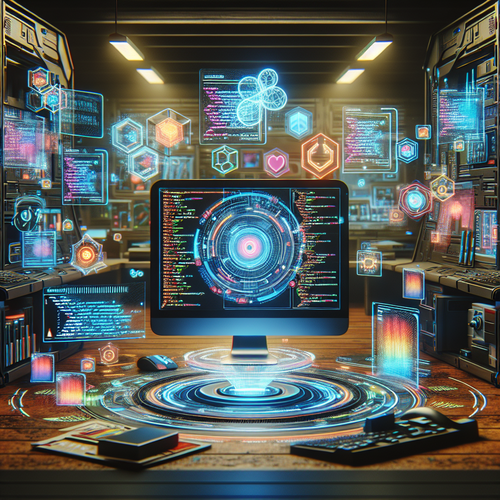
Top 5 AI Tools for Generating Code Documentation
Top 5 AI Tools for Generating Code Documentation
Code documentation is a crucial aspect of software development, enabling developers to understand, maintain, and enhance codebases effectively. However, generating and updating documentation can be a tedious and time-consuming task. Fortunately, with the advancement of artificial intelligence (AI), several tools have emerged to automate and streamline the documentation process. In this tutorial, we will explore the top five AI tools that can greatly enhance your code documentation efforts.
Prerequisites
- Basic understanding of programming and code documentation processes.
- Access to the internet to use AI tools and their features.
- A development environment where you can implement the generated documentation.
1. OpenAI Codex
OpenAI Codex is an advanced AI model that can understand and generate code. It can assist in writing documentation by generating detailed explanations based on comments and code context. Codex can also adapt to different programming languages, making it a versatile tool for developers.
Key Features:
- Automatic generation of function and class summaries.
- Support for various programming languages.
- Integration with existing development environments.
2. Lime
Lime is an AI-powered tool specifically designed for generating documentation from code comments and structure. It analyzes your codebase and automatically creates markdown files, reducing the overhead of manual documentation.
Key Features:
- Supports multiple programming languages.
- Customizable templates for documentation style.
- Simply integrates with version control systems.
3. Doxygen
Doxygen is a well-known documentation generator for various programming languages. While it traditionally relies on comments in the code, recent updates have introduced AI-assisted features to enhance the documentation process.
Key Features:
- Generation of documentation in various formats (HTML, PDF, etc.).
- Enhancements for existing comments using AI suggestions.
- Includes cross-referencing and linking between documented items.
4. InstaDocs
InstaDocs is an AI tool that focuses on automatically generating and updating documentation based on code changes. It allows teams to keep their documentation up to date without extensive manual intervention.
Key Features:
- Real-time documentation updates as code changes.
- Easy-to-use web interface for managing documentation.
- Collaboration features for team-based documentation.
5. DocGenius
DocGenius leverages natural language processing to create human-like documentation from code. It can interpret context and generate detailed explanations, making it an invaluable tool for complex codebases.
Key Features:
- High-quality, human-like documentation outputs.
- Context-aware document generation based on code analysis.
- Supports integration into CI/CD pipelines for automated documentation updates.
Troubleshooting Common Issues
- Integration Problems: Ensure your development environment or code repository settings are correctly configured for tool integrations.
- Output Quality: Review and tweak AI model settings (if available) to better suit your documentation style.
- Language Support: Verify that your programming language is supported by the tool you choose.
Summary Checklist
- Select the right AI tool based on your documentation needs.
- Integrate the tool with your development environment.
- Generate and review documentation regularly for accuracy.
- Keep abreast of updates and enhancements for the AI tools you use.
By leveraging these AI tools for code documentation, you can significantly reduce the time and effort required to maintain clear, concise, and up-to-date documentation. This will not only improve project efficiency but also enhance collaboration within your development team. Explore these AI options and choose the ones that best fit your workflow!
For further insights into AI tools and their applications in software development, you might be interested in our post on Top 5 AI Tools for Data Visualization.













